Have you ever looked at something broken and seen beauty in its flaws? Kintsugi, the Japanese art of golden repair, invites us to do just that. Instead of discarding cracked or damaged objects, this centuries-old tradition restores them with shimmering veins of gold, highlighting the very imperfections most would try to hide.
But Kintsugi is more than a repair method; it’s a philosophy that honors resilience, embraces the past, and transforms brokenness into something more meaningful. In today’s fast-paced world, where perfection is often prized, the quiet wisdom of Kintsugi reminds us that scars can be symbols of strength, not shame.
1. What is Kintsugi - The Japanese art of golden repair?
Kintsugi, also known as the Japanese art of golden repair, is a unique restoration technique that originated in Japan. Traditionally applied to broken ceramics, it involves using natural lacquer as an adhesive, followed by dusting with powdered gold, silver, or platinum to mend the cracks. Over time, this philosophy has transcended pottery and is now creatively adapted by modern artisans in the field of high-end handcrafted jewelry.
For cracked bracelets, broken chains, or chipped rings, instead of discarding them, the Japanese art of golden repair offers a meaningful alternative: preserving the damaged parts and enhancing them with shimmering lines of gold as part of a renewed design. This method not only restores the original form but also gives the piece a new, one-of-a-kind beauty filled with depth and emotional value.
The word Kintsugi comes from two Japanese Kanji characters: "Kin" (金), meaning gold – a symbol of lasting beauty and worth, and "Tsugi" (継ぎ), meaning to join or reconnect – representing the act of healing without erasing the past. Kintsugi is more than just a technique; it’s a philosophy that embraces imperfection and views the passage of time as something to be honored rather than hidden.
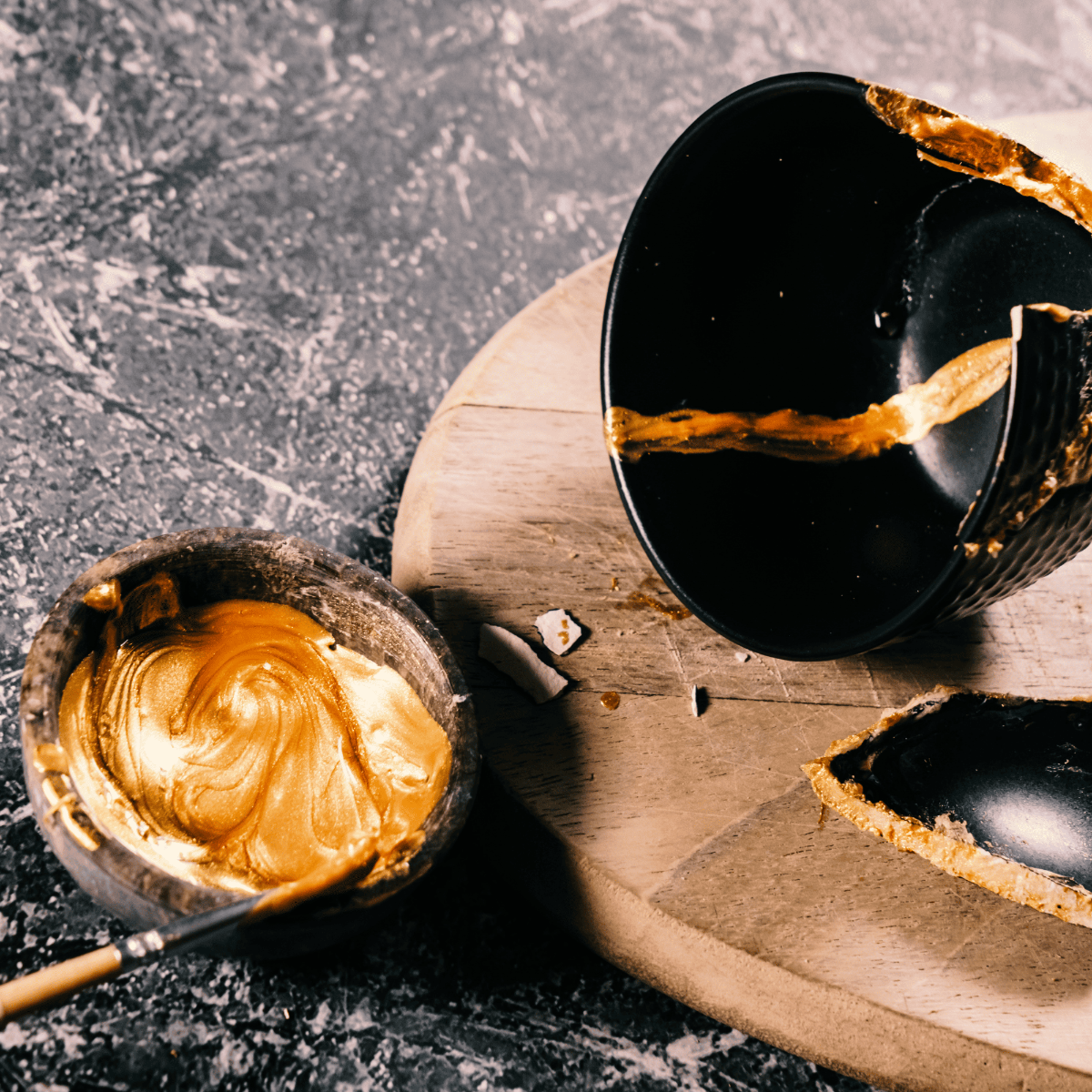
Kintsugi - The Japanese art of golden repair that celebrates imperfection
What sets the Japanese art of golden repair apart from conventional restoration methods is its perspective on value. While most repairs aim to hide flaws using glue and return the item to its original state, Kintsugi highlights the cracks with precious metals, turning them into celebrated features. The process is intricate and time-consuming, often requiring weeks for the lacquer to cure properly, demanding patience and craftsmanship.
Interestingly, a piece of jewelry restored using the Kintsugi method often becomes more valuable than it was originally. Each golden line tells a story, marking a unique transformation that no brand-new item could replicate. It becomes not just repaired, but reborn.
2. The origins of Kintsugi in the flow of Japanese history
Kintsugi, known today as the Japanese art of golden repair, traces its roots back to the 15th century during the Muromachi period—a time of cultural richness and flourishing artistry in Japan. More than just a traditional repair technique, Kintsugi evolved into a profound cultural symbol, closely tied to the philosophy of Wabi-Sabi, which celebrates simplicity, imperfection, and the beauty that comes with age and wear.
The story of Kintsugi begins with a meaningful incident in the world of Japanese tea culture. According to historical accounts, it originated from an event involving the prominent shogun Ashikaga Yoshimasa, a man known for his deep appreciation of the tea ceremony and aesthetics.
One day, his cherished Chinese tea bowl was accidentally broken. He sent it back to China for repair, but it was returned with crude metal staples that marred its elegance. Dissatisfied with the result, Yoshimasa challenged Japanese craftsmen to find a more refined way to restore the vessel.
In response, artisans developed a technique using natural urushi lacquer mixed with powdered gold or other precious metals to mend the cracks. This marked the beginning of Kintsugi—a method that not only repaired the item but elevated it, transforming brokenness into beauty.
Kintsugi is not merely about fixing objects; it embodies the spirit of Wabi-Sabi. The Japanese believe that every crack and flaw carries a story, a history worth preserving. Used objects do not lose their value; instead, they gain character and uniqueness through the marks of time.
This perspective elevated the Japanese art of golden repair beyond a restoration method. It became a revered form of craftsmanship, embraced by nobility and tea masters alike. Over time, Kintsugi transcended its original role in ceramic repair and began influencing contemporary art, fashion, interior design, and even therapeutic practices.
Today, Kintsugi stands as a powerful symbol of resilience, healing, and the idea that imperfections can become the most beautiful part of a story. It remains a living cultural legacy in Japan, cherished and passed down as a quiet but profound philosophy of embracing flaws and finding meaning in restoration.
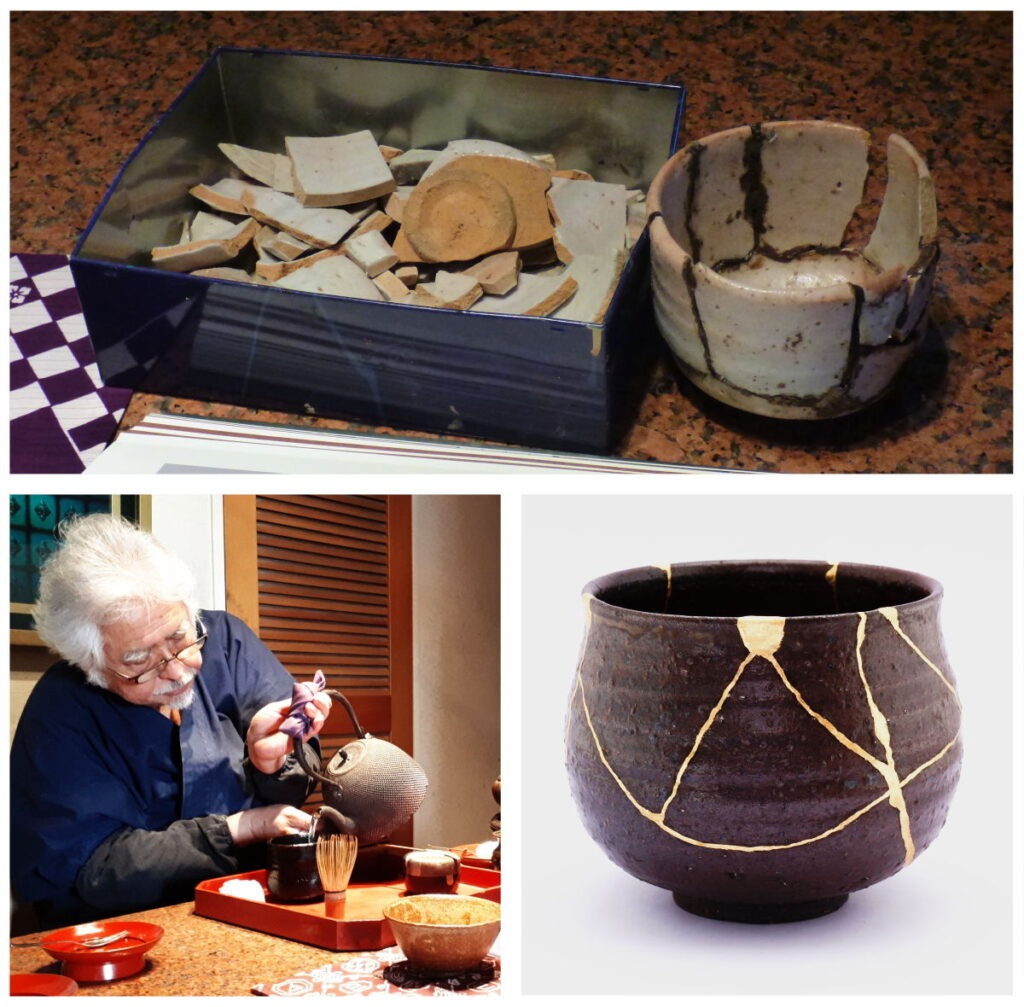
Kintsugi - The Japanese art of golden repair that celebrates imperfection
3. The profound philosophy behind Kintsugi
The Japanese art of golden repair conveys a powerful message: cracks and flaws are not signs of weakness, but rather symbols of resilience, growth, and the passage of time. These imperfections do not reduce value; instead, they add unique beauty and meaning.
In many ways, the message of Kintsugi mirrors our own lives. Just as broken pottery is repaired and transformed, so too can we embrace our emotional scars and life’s challenges as part of our story. Every wound we carry holds a lesson, and every setback becomes a chapter in the art of living.
The essence of the Japanese art of golden repair resonates deeply with the human desire for healing, acceptance, and transformation. In a world that often glorifies perfection, Kintsugi gently reminds us that true beauty lies in our ability to recover, rebuild, and wear our scars with grace.
More than just an artistic technique, Kintsugi is a philosophy of life—one that teaches us to honor what is broken, to find strength in imperfection, and to celebrate the journey of becoming whole again.
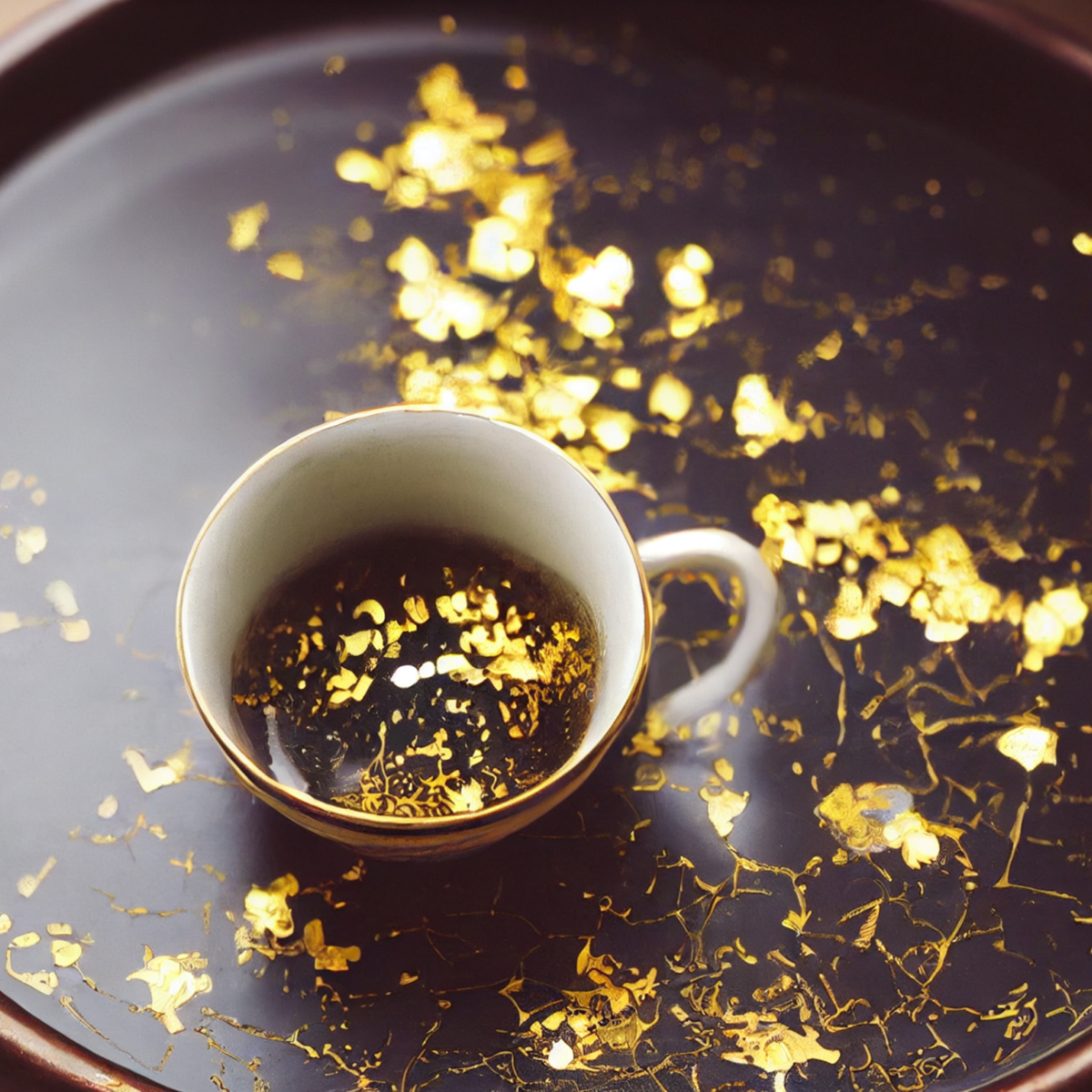
Kintsugi - The Japanese art of golden repair that celebrates imperfection
4. The Kintsugi process and the delicate journey of restoration
Practicing Kintsugi, also known as the Japanese art of golden repair, is not just about fixing broken items—it’s a meditative process that blends craftsmanship with philosophy. Each step requires patience, precision, and care, as the goal is not simply restoration, but transformation through beauty and meaning.
The process begins by collecting all the broken fragments of the item. This step is crucial to ensure no piece is missing. The pieces are then carefully joined together using urushi lacquer, a natural resin harvested from the Japanese lacquer tree. Once the lacquer dries completely, the visible seams are highlighted with powdered gold, silver, or platinum, turning every crack into a shimmering part of the design, rather than something to be hidden.
This entire process can take several days to weeks, depending on the complexity of the break and the drying conditions. What sets the Japanese art of golden repair apart is its reverence for time—each stage must be done slowly and deliberately, allowing the materials to cure naturally.
In modern adaptations, some contemporary artists are combining Kintsugi with alternative materials such as bioplastics, glass, or brass. This blend of traditional techniques with innovative materials has brought new life to an ancient art form, expanding its relevance in contemporary art, design, and jewelry making.
Through this delicate and thoughtful process, Kintsugi continues to inspire not only as a restoration method but as a reminder that beauty can be found in brokenness—and that with care, anything can be made whole again, even more beautiful than before.
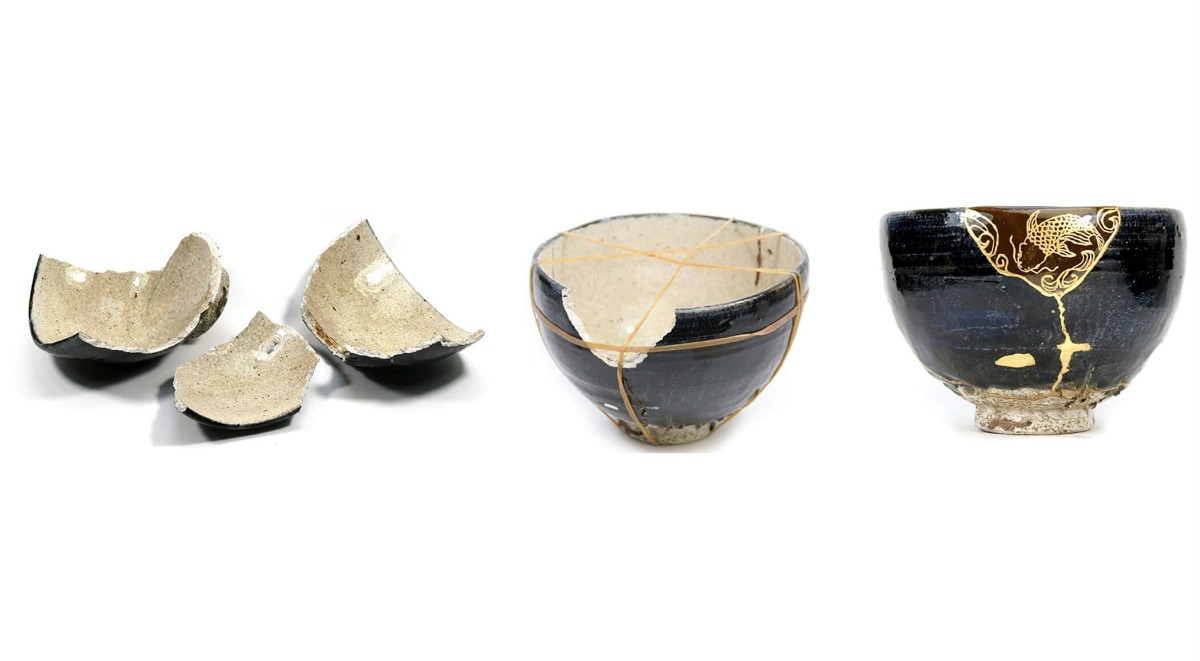
Kintsugi - The Japanese art of golden repair that celebrates imperfection
5. The modern applications of Kintsugi in everyday life
In today’s world, the Japanese art of golden repair has transcended its original purpose of restoring broken ceramics. Its core philosophy—celebrating imperfections and turning damage into beauty—has inspired a wide range of applications in modern life, from fashion and interior design to mental wellness and personal growth.
In jewelry design, many artisans and brands are now incorporating Kintsugi-inspired motifs into bracelets, necklaces, rings, and earrings. Rather than hiding cracks, these designs highlight them with gold-like accents, symbolizing resilience and the beauty found in imperfection. Jewelry inspired by the Japanese art of golden repair has become increasingly popular for its emotional depth and symbolic meaning, making each piece truly personal and unique.
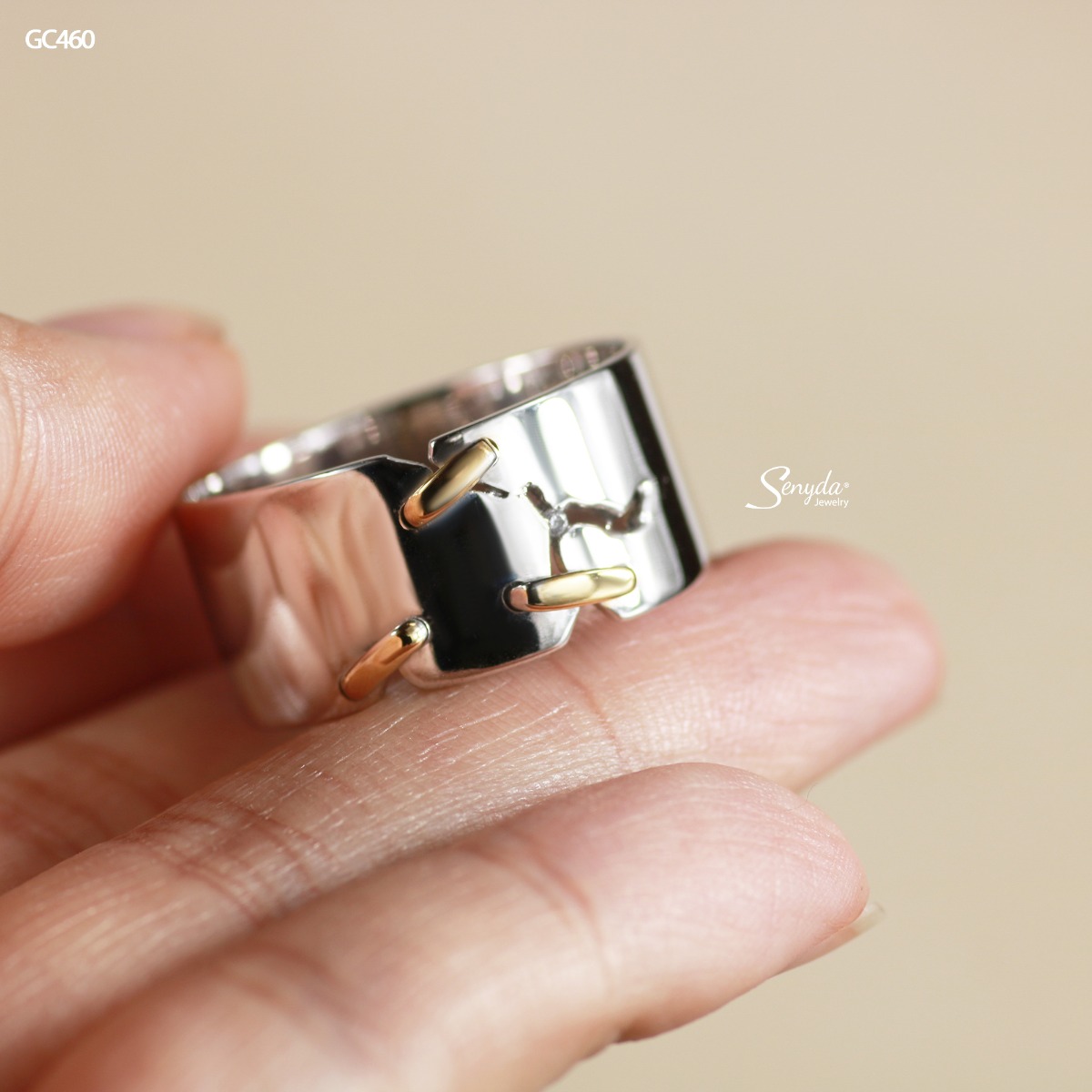
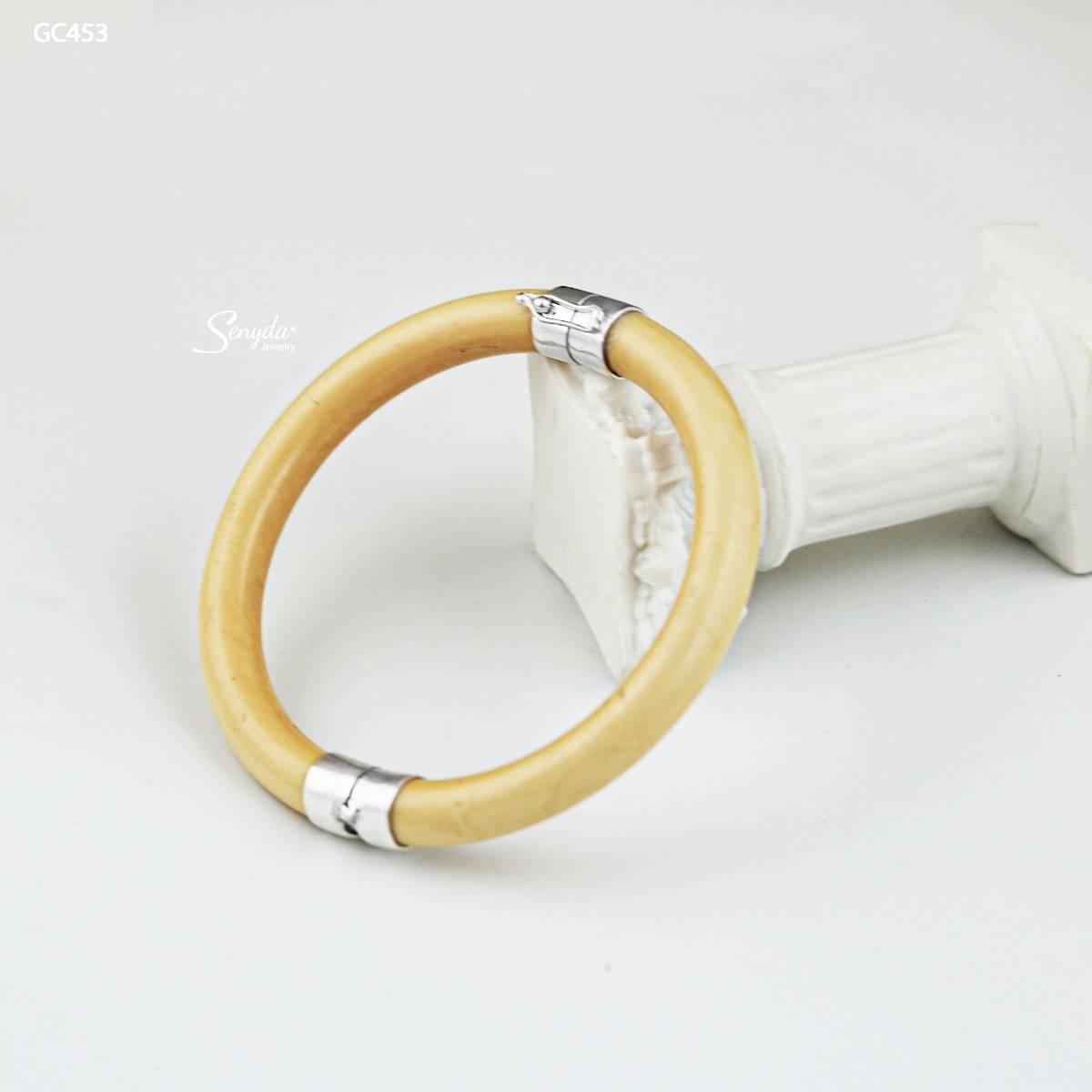
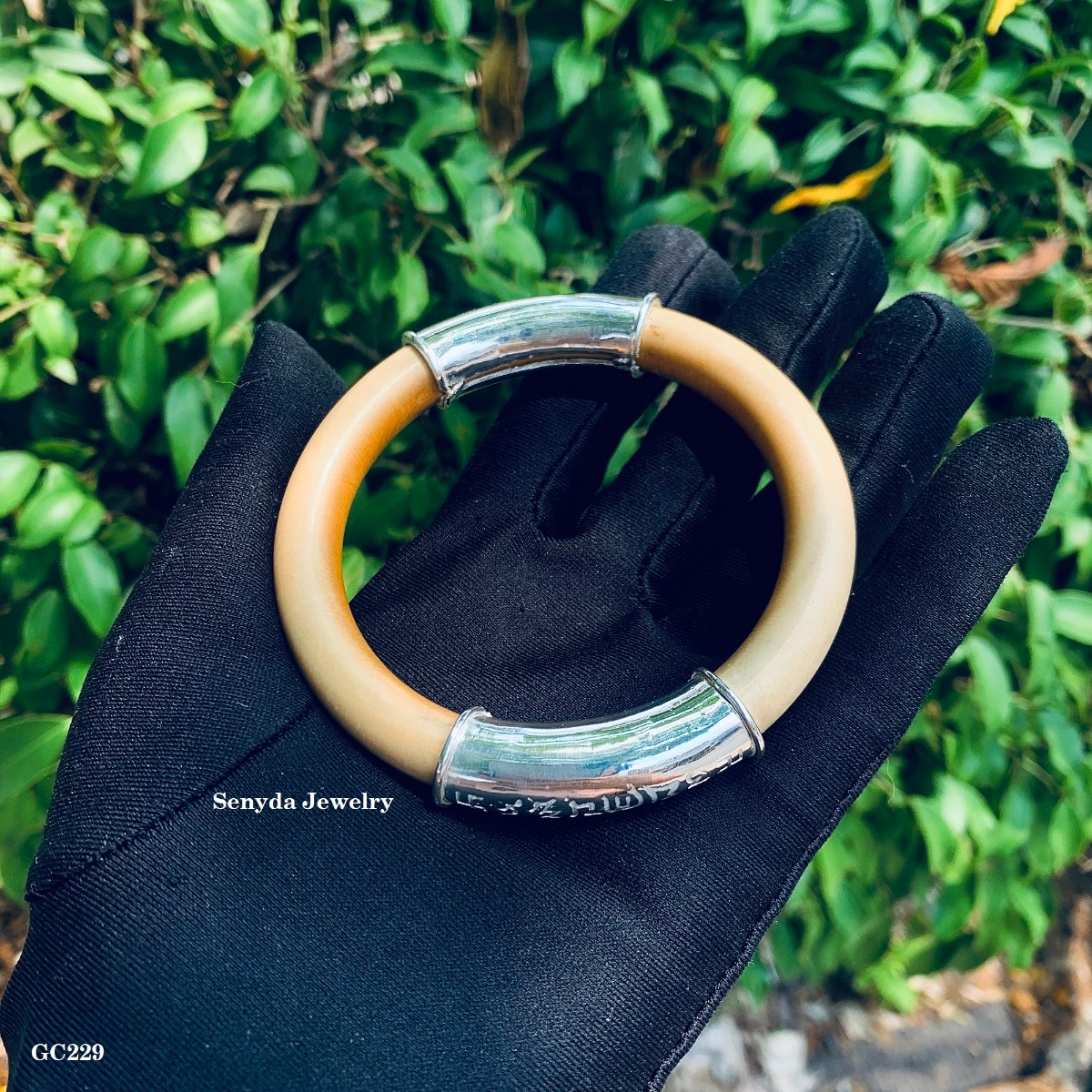
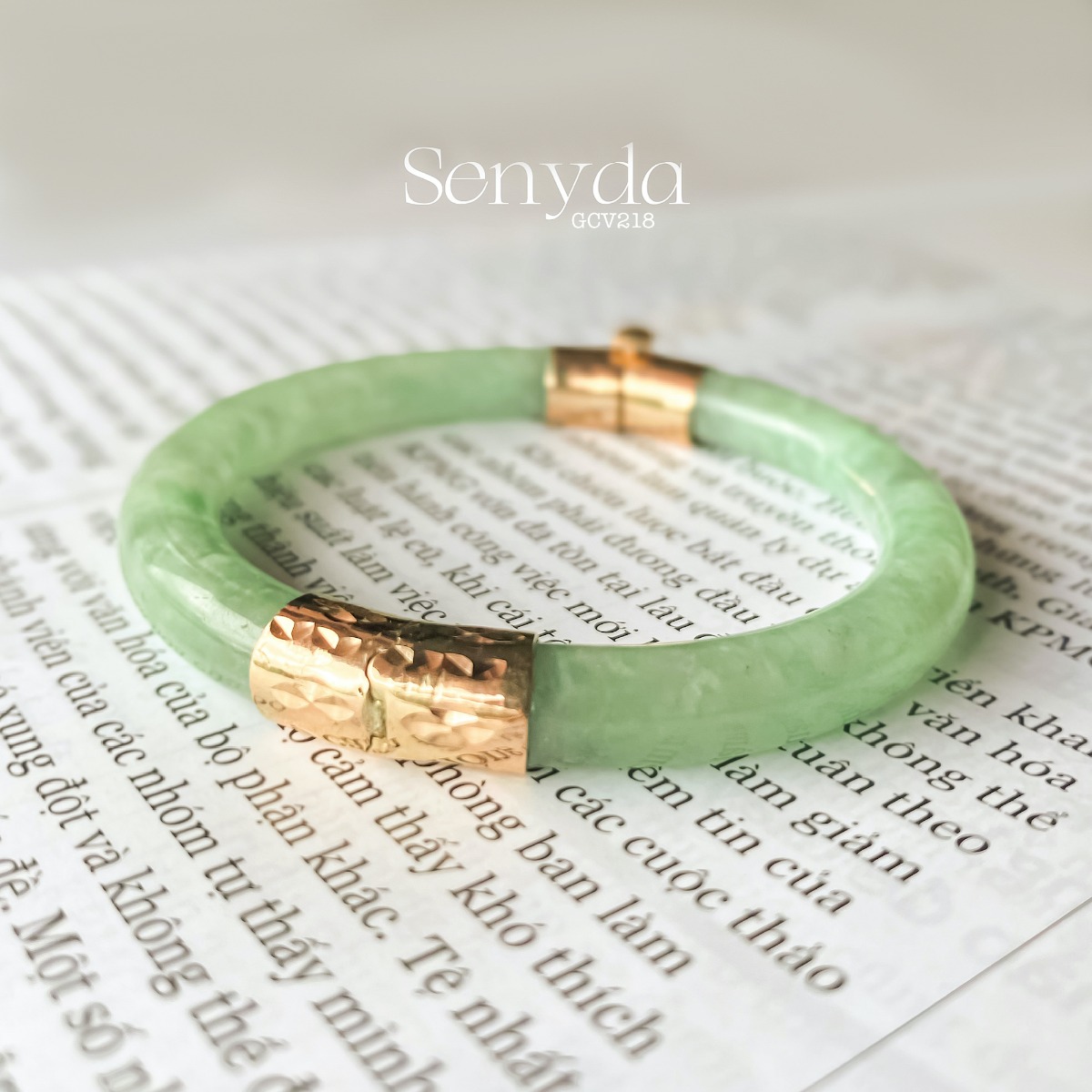
Kintsugi - The Japanese art of golden repair that celebrates imperfection
In interior decor, Kintsugi is used to restore and transform objects like ceramic bowls, plates, vases, and porcelain sculptures. These once-broken items are repaired using traditional lacquer and gold powder, then displayed as decorative pieces that embody both aesthetic value and a deeper narrative of renewal. Such objects become more than functional—they become conversation starters and artistic expressions of endurance and transformation.
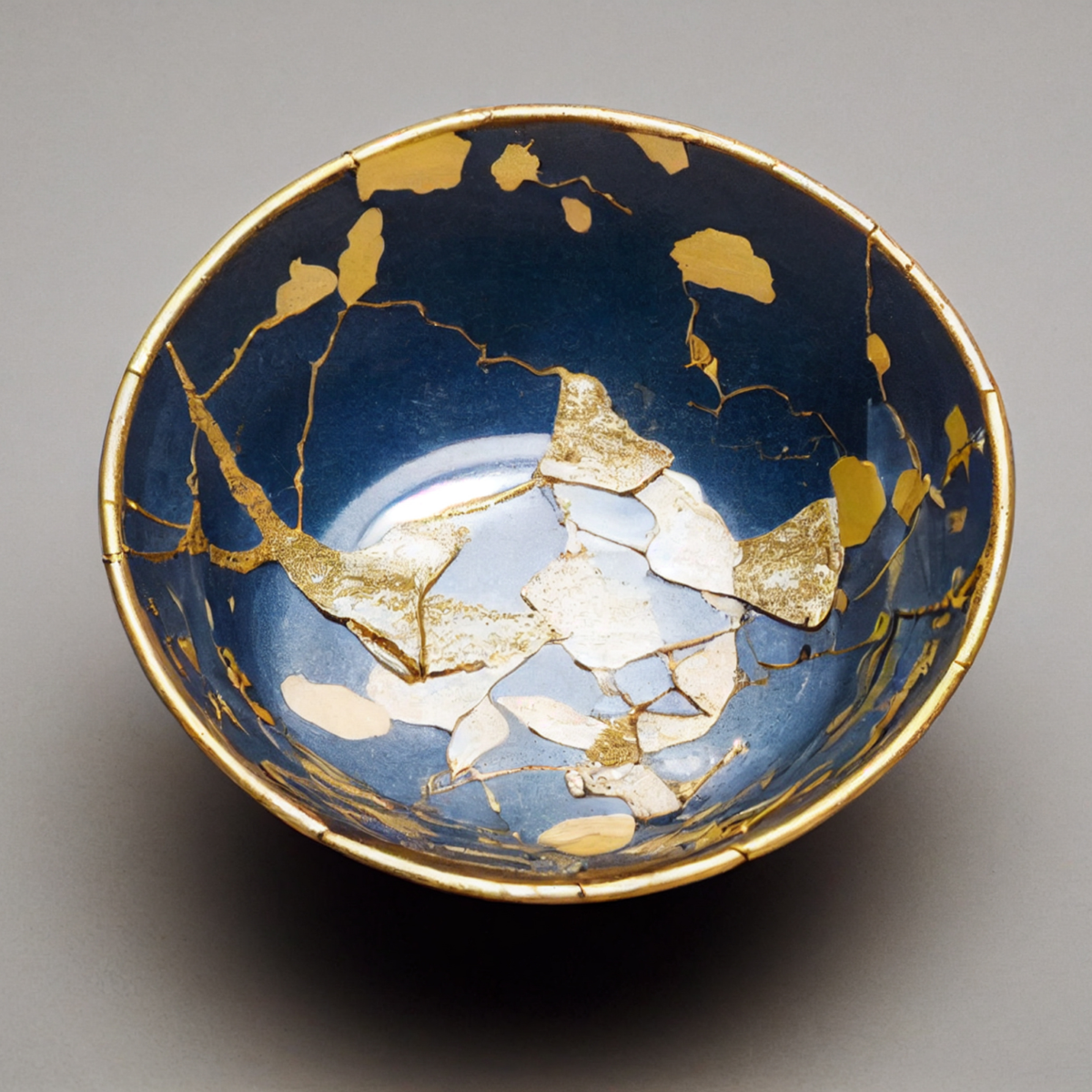
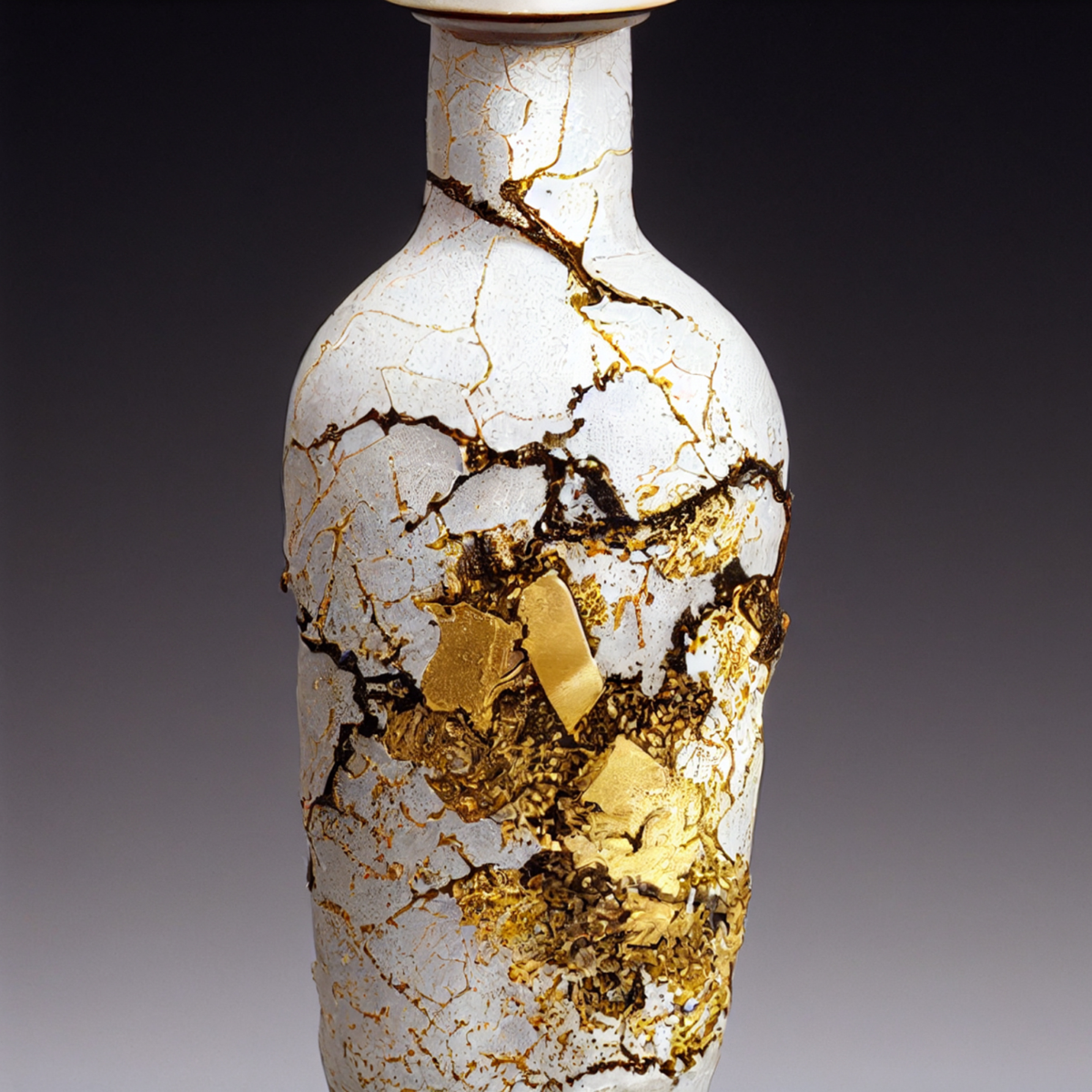
Kintsugi - The Japanese art of golden repair that celebrates imperfection
Beyond the physical realm, Kintsugi has made its way into modern psychology and personal development. Its philosophy is embraced as a metaphor for emotional healing, encouraging people to accept their past wounds as part of their identity rather than something to hide. In therapeutic contexts, the Japanese art of golden repair is seen as a powerful symbol of recovery, teaching us that our scars—when acknowledged and honored—can become sources of strength and beauty.
6. The global allure of Kintsugi: The golden art that touches hearts worldwide
In today’s fast-paced world, where perfection is often overvalued, the quiet wisdom of Kintsugi aligns beautifully with a growing desire for mindfulness, emotional depth, and authenticity.
What makes the Japanese art of golden repair so captivating is its unique blend of aesthetic beauty, philosophical richness, and emotional symbolism. Each golden crack tells a story—not of something broken and discarded, but of resilience, healing, and a deeper kind of beauty born from imperfection. These shining lines are not flaws to hide but features to highlight, transforming the item into something even more precious and meaningful.
As a result, Kintsugi has become a source of inspiration for artists, designers, and creatives across the globe. From handmade jewelry collections and fashion pieces to visual arts and therapeutic practices, Kintsugi has found its place as a global symbol of rebirth, individuality, and emotional restoration.
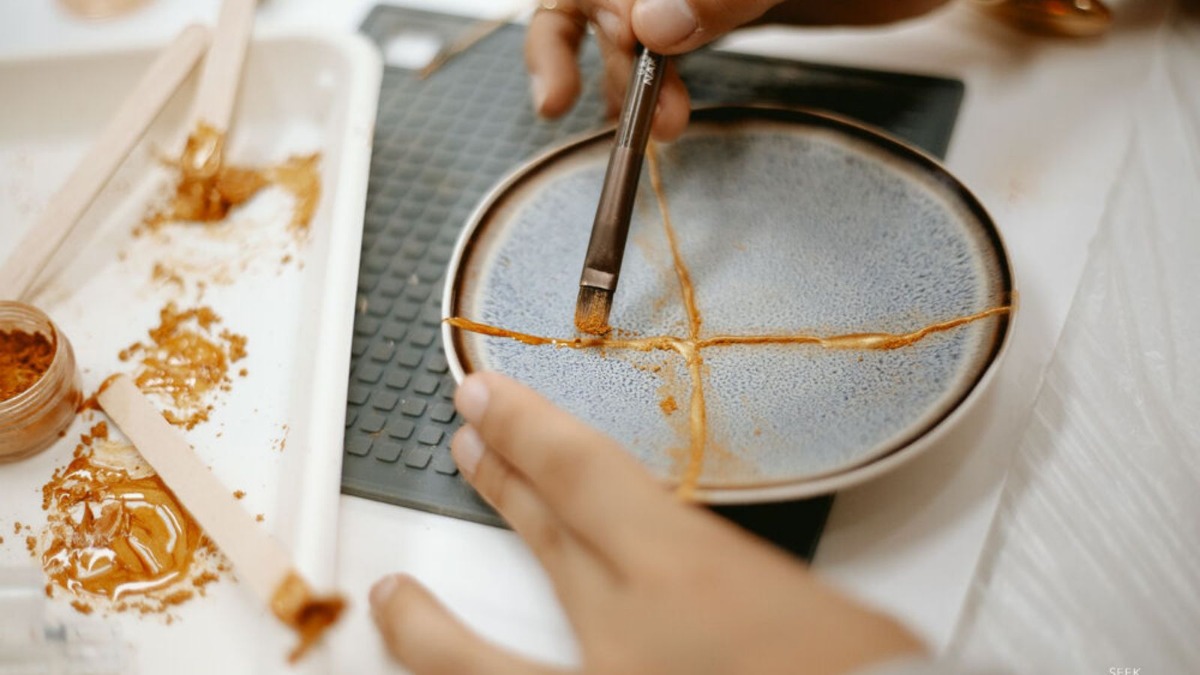
Kintsugi - The Japanese art of golden repair that celebrates imperfection
The growing appreciation for Kintsugi reaches far beyond its Japanese roots. It touches people who seek healing and who understand that true beauty doesn’t lie in perfection, but in the courage to embrace life’s cracks—with grace, strength, and compassion.
In the end, Kintsugi teaches us a powerful truth: that beauty doesn’t lie in flawlessness, but in the journey of healing and transformation. By embracing cracks and honoring what was once broken, the Japanese art of golden repair offers more than restored objects—it offers perspective. Whether it’s a cherished piece of jewelry or a chapter in your own life, Kintsugi reminds us that imperfections don’t diminish value—they enhance it. So the next time something breaks, perhaps you won’t rush to replace it. Instead, you might ask: How can I mend this with gold?
